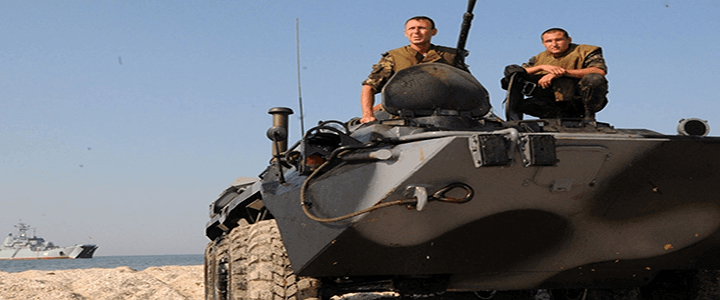Sending lethal military aid to Ukraine was a central question in the confirmation hearings of Deputy Defense Secretary Patrick Shanahan last summer. Sen. John McCain (R-Ariz., — who, by the way, insists he will be returning to work this month after taking some time off to recover from the side effects of his brain cancer treatment) has long been an advocate for exercising the authority Congress gave the president several years ago.
In November, McCain’s vice chairman on the Senate Armed Services Committee, Sen. James Inhofe (R-Okla.) repeated this request to the Trump administration. The latest National Defense Authorization Act includes an additional $350 million in military aid for Ukraine. Inhofe called Russia’s actions in Crimea “unprecedented in modern European history,” and urged the president to provide the government there with “long-overdue defensive lethal assistance.”
Change in policy quietly announced before the holidays
President Obama had feared giving weapons to Ukraine would escalate tensions with Russia, so he repeatedly invoked the loophole that let him declare such aid not to be in the national security interest of the United States. For almost the entire first year of the Trump administration, it appeared that decision would stand. This, of course, gives further ammunition to those who believe the president and his team colluded with the Russian government to influence the 2016 election, despite the fact that many of those same people were perfectly happy with the policy when it was their guy implementing it.
But the president’s personal reluctance notwithstanding, as demonstrated in the National Security Strategy, the U.S. will take a harder line against Russia than has been the case. On December 20, the Washington Post reported the State Department had approved the sale of $41.5 million worth of M107A1 sniper rifles, a weapons system that allows a sniper to hit a target with a .50 caliber bullet at distances as great as 2,000 meters (or 1.25 miles).
And late on Friday, December 22, the State Department announced it had approved an export license for 210 Close Combat Missile System-Medium systems, better-known as the Javelin anti-tank missile. The sale, valued at $47 million, gives the Ukrainian military the ability destroy the Russian-made T-72 tanks that have played role previously in the Donetsk insurgency.
The Javelin missile is a “fire-and-forget” weapon, meaning that its crew does not have to guide it manually onto its target. It features a tandem shaped-charge warhead, useful for defeating reactive armor, which uses explosive charges to defeat incoming missiles, and is also capable of attacking the top of tank turrets, where the armor is thinner.
Is it all for show?
How much real difference the Javelin systems will make is open to debate. Tanks have not, in recent years, played a major role in the insurgency. But providing Javelins is a signal. It signals to the Ukrainians that the days of the United States withholding lethal aid are over. It sends the same signals to the Russians, as well as putting insurgent tank crew on notice that there is a new, more powerful weapon on the battlefield.
These missiles and riles alone alone will not make-or-break the Ukrainian defense against Russian aggression. Ukraine will require much more assistance to defeat the eastern insurgency. And reclaiming the Crimean peninsula, Which Russia illegally annexed, is an entirely different matter altogether.
The Trump administration has taken the first steps. Let us hope they are not the last steps.




